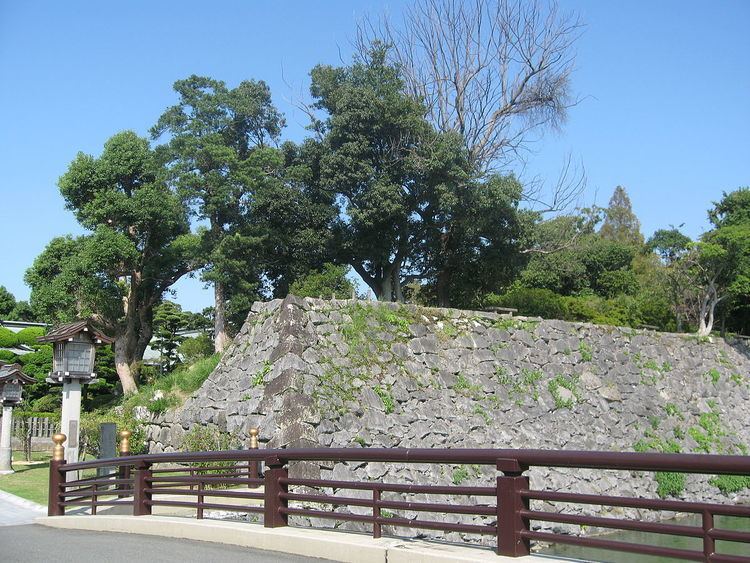 | ||
The Kumamoto Domain (熊本藩, Kumamoto-han), also known as Higo Domain (肥後藩, Higo-han), was a Japanese domain of the Edo period. It was associated with Higo Province in modern-day Kumamoto Prefecture.
Contents
In the han system, Kumamoto was a political and economic abstraction based on periodic cadastral surveys and projected agricultural yields. In other words, the domain was defined in terms of kokudaka, not land area. This was different from the feudalism of the West.
History
The domain was centered at the Kumamoto Castle in Kumamoto.
Under the Hosokawa, with an income of 540,000 koku, the Kumamoto domain was one of the largest in Kyushu, second only to the Satsuma Domain, and excluding the lands held by the Tokugawa and Matsudaira clans, the fourth-largest in Japan after the Kaga, Satsuma and Sendai domains.
List of daimyo
The hereditary daimyo were head of the clan and head of the domain.
- Kiyomasa (1562–1611)
- Tadahiro (1597–1653)
- Tadatoshi (1586–1641)
- Mitsunao
- Tsunatoshi
- Nobunori
- Munetaka
- Shigekata (1718–1785)
- Harutoshi
- Narishige
- Naritatsu
- Narimori
- Yoshikuni
- Morihisa
